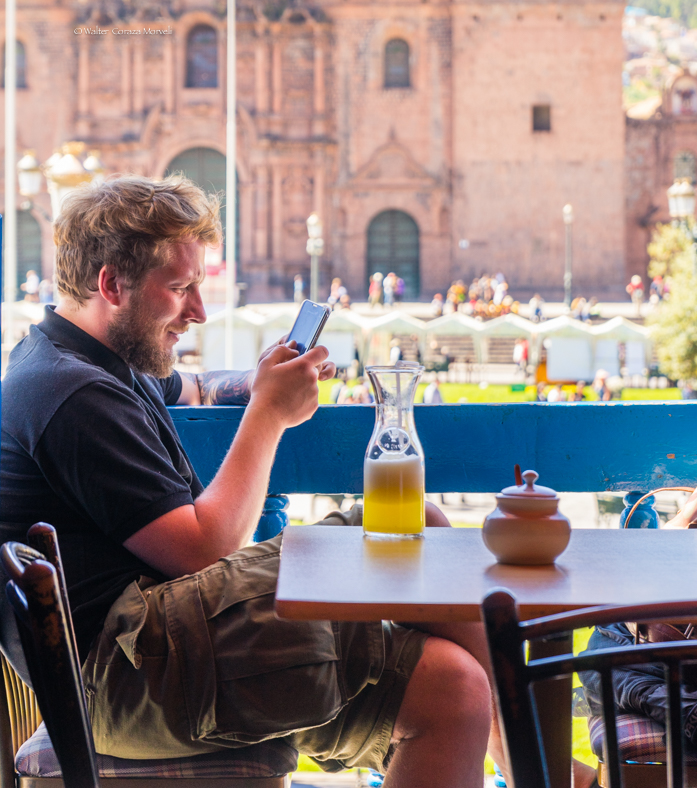Food as Personal Identity or Eating as Community

I love to cook. Cooking leads to food, and I have no desire to eat all that I make, so frequently I offer my creations to others. I find that more and more, people will turn down the food I offer. Even ‘starving students’ at my college would refuse foods on the grounds that they had never had it before, or perhaps they were concerned about the cleanliness of the preparation. They preferred packaged foods to ‘homemade’ food.
When is it acceptable to turn down what has been offered?
In Peru, according to Safari the Globe, “You should try everything offered and if you enjoy something compliment the host and you will be quickly offered more, but if you are offered additional food, initially turn it down then accept it after your host insists.”
In the United States, people seem to identify themselves by the food they “don’t” eat. More and more people are adhering to particular diets – they may be vegan, vegetarian, dairy free, gluten free. Others have very strong dislikes – perhaps they do not eat seafood or onions. People have religious affiliations that preclude the use of alcohol or certain meats. Food restrictions also are part of adhering to a particular diet to lose weight or because of health problems such as diabetes or high blood pressure.

A quick perusal of the internet found no guidelines for eating in a host’s home for the United States, but it was noted that many people here eat individually. Food is available right from your car. Twenty percent of food eaten in America is eaten in cars. Drive through, fast food packaged in individual servings is so prevalent in the United States every man woman and child eats ‘fast food’ or snacks from a restaurant or other food vendor once per day. The ‘family dinner’ is no longer the norm with over 10% of families reporting that they never eat together. Only 40 percent report eating together between 3 and 5 times per week. When I was young, it was considered good manners to try something offered, now warning children about eating something ‘homemade’ is more likely.

Historically, food has been difficult to access, and when the opportunity arose to eat, people would eat all that was available. It is now possible to walk down the street and have food from different nations, or different preparations of our own cuisine available to us.(for a price) Our current access to food is beyond what is necessary for our survival, so many of us have developed preferences or become ‘picky eaters’.
I wanted to ask how much the over-abundance of food has pressured ‘good manners’ or the way people offer food to each other and accept food from each other. Food is an important part of socialization in Peru and in Utah.
In Utah, it is a common to have people ‘over for dinner’. Increasingly the host must ask about food preferences before guests arrive to make sure that adequate food is available to each person’s taste. It is much harder work for the host. A menu must be submitted to the guests for their approval well before the day of the dinner. The host prepares the food, although sometimes guests will bring a food they have prepared or something they have purchased for the dinner. (only 31% of food eaten in the United States is ‘fresh’ while the rest is packaged foods)
In Peru, it builds community to eat together. Family dinners are still common. According to ‘World Family Map’ over 60% of fifteen-year-old children eat at home with their families every night South America. The pressure of two family incomes, with men and women working together to earn money rather than raise food is making it increasingly difficult even in Peru for families to have their dinners together. Eating communally is still very important.

I had an opportunity to offer food to a man recently. He accepted the invitation, ate the food with great compliments. He said, “I feel like I am at home! You treat me like my mother and offer food before I even know I want it!” Hope rose up in my breast. Perhaps people in the United States were not as picky as I had thought!
Then he revealed he was from Italy.
https://www.tripadvisor.com/Travel-g191-c13119/United-States:Food.And.Drink.html
http://www.safaritheglobe.com/peru/culture/food-drinks/
http://www.theprofessionalhobo.com/2015/06/street-food-in-peru-and-around-the-world/
http://worldfamilymap.ifstudies.org/2015/articles/world-family-indicators/family-processes
http://www.gallup.com/poll/10336/empty-seats-fewer-families-eat-together.aspx
https://www.dosomething.org/us/facts/11-facts-about-american-eating-habits
https://www.tripadvisor.com/Travel-g191-c13119/United-States:Food.And.Drink.html




